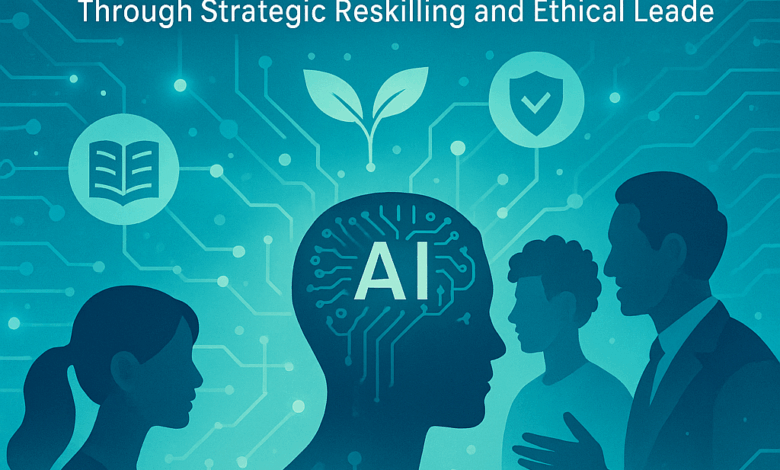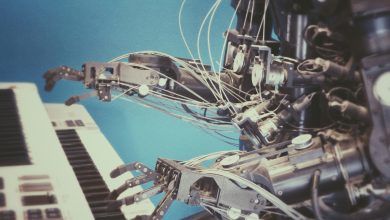
In today’s rapidly evolving business landscape, artificial intelligence (AI) isn’t merely an IT project—it’s a strategic imperative reshaping every function across industries. For executives in both the US and UK, where over 70% of AI Journal’s readership resides, building an AI-ready workforce is now an urgent leadership priority. Companies that proactively reskill employees and secure leadership buy-in will be positioned to harness AI’s transformative potential, while those who delay face obsolescence.
Why AI Readiness Matters
The World Economic Forum predicts that by 2027, AI and automation will disrupt 44% of core workforce skills, creating millions of new roles that currently don’t exist. The key differentiator in navigating this change isn’t technology alone, but how effectively organizations prepare their employees for new ways of working.
Reskilling Framework: A Four-Step Approach
- Identify Skills Gaps (Assess):
Conduct comprehensive, data-driven audits using HR analytics to map current employee skills against future demands. For instance, Unilever’s AI-driven internal marketplace successfully identified skills gaps, unlocking approximately 700,000 hours in workforce capacity and driving a 41% productivity boost. - Personalized Learning (Customize):
Generic training is ineffective. AI-powered platforms can customize learning paths, adapting content based on individual career trajectories and needs. Infosys successfully reskilled over 200,000 employees through its AI-driven learning platform, Lex, achieving broad AI fluency and strengthening ethical AI practices across teams. - Continuous Learning Culture (Embed):
Establish learning as an everyday activity, supported by incentives like career progression or financial rewards. Tata Consultancy Services (TCS) embedded AI learning into employee performance criteria, resulting in over 423,000 employees (80% of its workforce) actively participating in AI-related upskilling programs. - Evaluate and Iterate (Measure):
Reskilling isn’t a one-time effort but a cycle of continuous improvement. Companies must track key metrics, including internal mobility, employee retention, and productivity. IKEA’s reskilling initiative, which transitioned 8,500 employees into higher-value, customer-facing roles, generated an estimated $1.4 billion in revenue, demonstrating that measured, iterative workforce transformations yield significant benefits.
Leadership Buy-In: Essential but Challenging
Executive leadership is critical in this transformation. However, pitfalls can derail even the best initiatives:
- Ignoring Communication: Leaders must articulate clearly why AI initiatives are necessary, addressing fears around job displacement with empathy and transparency.
- Viewing AI as an IT-only Initiative: AI transformations should be integrated into broader strategic plans rather than delegated solely to technical teams. Successful companies create cross-functional governance to manage this holistic approach.
- Ethical Oversights: Ethical concerns around AI, such as data bias and privacy, must be proactively managed. Implementing diverse governance committees and transparent AI usage policies can mitigate risks and build trust.
To effectively lead AI transformation, executives should embrace continuous learning themselves, modeling adaptability and transparency. This fosters an environment where employees feel empowered, not threatened, by AI-driven changes.
Ethical AI Integration
Ethical considerations must be central to workforce reskilling:
- Bias Mitigation: Companies like Unilever use AI to surface unbiased opportunities for talent mobility, dramatically improving diversity outcomes—67% of new AI-facilitated project opportunities were filled by female employees.
- Inclusivity and Accessibility: Training must accommodate diverse employee backgrounds, skill levels, and geographic locations. Inclusivity enhances innovation by harnessing the full potential of employees.
- Transparency and Trust: Clear communication on AI’s role in workforce management and decision-making ensures employees understand and trust the systems they interact with.
Human-AI Collaboration
AI isn’t replacing employees; it’s redefining roles. Automating routine tasks enables employees to focus on strategic, creative, and interpersonal activities. For example, AI-driven chatbots handle fundamental customer interactions, freeing human workers for more complex customer engagements, enhancing both productivity and job satisfaction.
Conclusion: A Call to Action
The AI transformation demands bold leadership and strategic reskilling. Organizations embracing continuous learning, transparent leadership communication, and ethical integration will thrive, turning workforce disruptions into competitive advantages. Ultimately, building an AI-ready workforce isn’t merely about survival—it’s about defining your organization’s future success.
About the Author
Ganeshkumar Palanisamy is a seasoned technology leader with over 15 years of experience in enterprise data management. His work focuses on architecting and developing scalable distributed systems for multi-cloud environments. Currently serving as Principal Software Architect at Reltio in Austin, he has held pivotal roles, including Director of Customer Reliability Engineering and Senior Software Engineering Manager, driving multi-cloud FinOps systems, customer reliability platforms, and freemium initiatives that have boosted revenue by millions. His expertise spans Java, Python, cloud platforms (AWS, GCP, Azure), and big data technologies, with a proven track record of optimizing performance, reducing costs, and enhancing customer satisfaction for global financial and life sciences clients.




